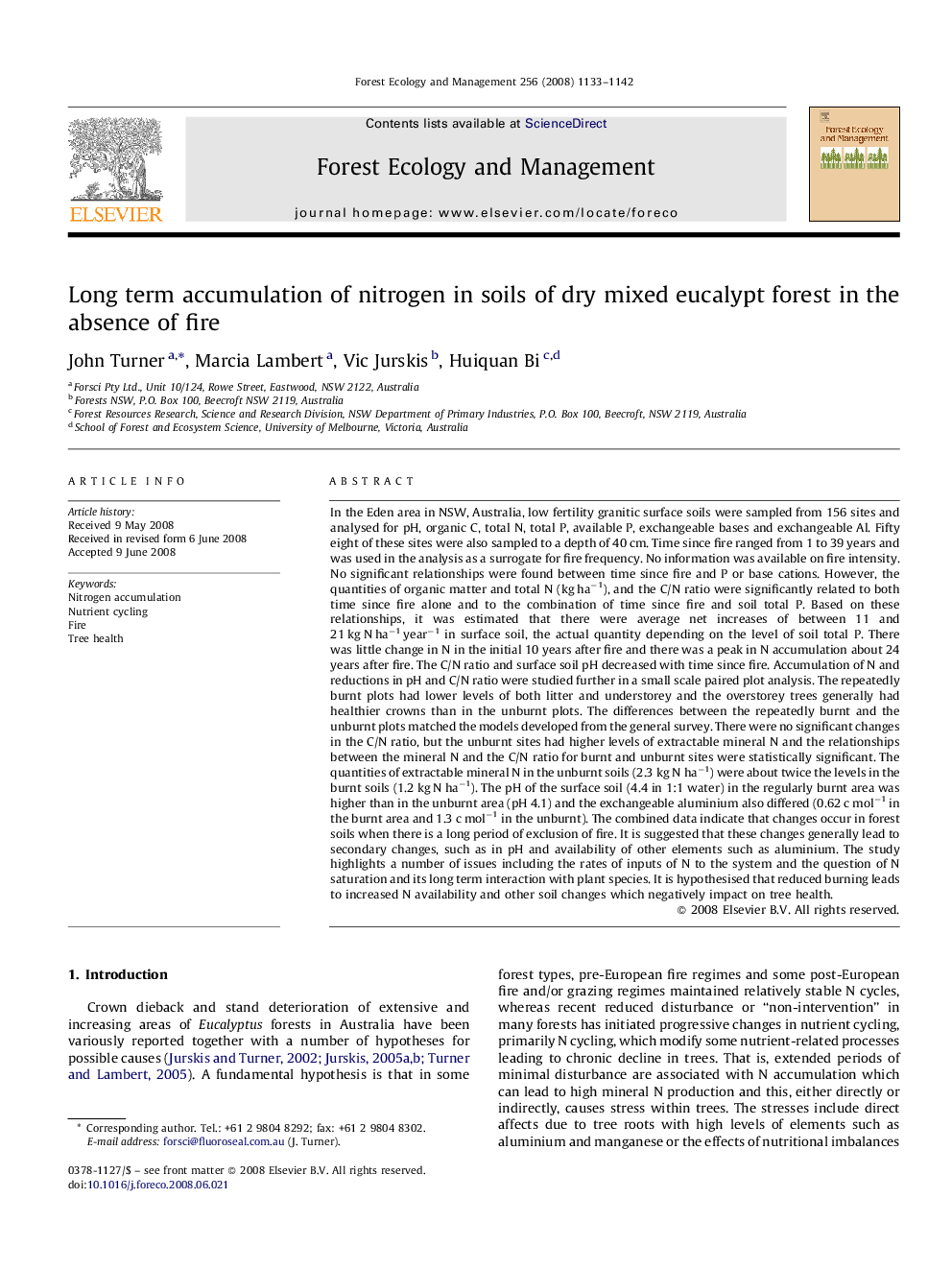| Article ID | Journal | Published Year | Pages | File Type |
|---|---|---|---|---|
| 88803 | Forest Ecology and Management | 2008 | 10 Pages |
In the Eden area in NSW, Australia, low fertility granitic surface soils were sampled from 156 sites and analysed for pH, organic C, total N, total P, available P, exchangeable bases and exchangeable Al. Fifty eight of these sites were also sampled to a depth of 40 cm. Time since fire ranged from 1 to 39 years and was used in the analysis as a surrogate for fire frequency. No information was available on fire intensity. No significant relationships were found between time since fire and P or base cations. However, the quantities of organic matter and total N (kg ha−1), and the C/N ratio were significantly related to both time since fire alone and to the combination of time since fire and soil total P. Based on these relationships, it was estimated that there were average net increases of between 11 and 21 kg N ha−1 year−1 in surface soil, the actual quantity depending on the level of soil total P. There was little change in N in the initial 10 years after fire and there was a peak in N accumulation about 24 years after fire. The C/N ratio and surface soil pH decreased with time since fire. Accumulation of N and reductions in pH and C/N ratio were studied further in a small scale paired plot analysis. The repeatedly burnt plots had lower levels of both litter and understorey and the overstorey trees generally had healthier crowns than in the unburnt plots. The differences between the repeatedly burnt and the unburnt plots matched the models developed from the general survey. There were no significant changes in the C/N ratio, but the unburnt sites had higher levels of extractable mineral N and the relationships between the mineral N and the C/N ratio for burnt and unburnt sites were statistically significant. The quantities of extractable mineral N in the unburnt soils (2.3 kg N ha−1) were about twice the levels in the burnt soils (1.2 kg N ha−1). The pH of the surface soil (4.4 in 1:1 water) in the regularly burnt area was higher than in the unburnt area (pH 4.1) and the exchangeable aluminium also differed (0.62 c mol−1 in the burnt area and 1.3 c mol−1 in the unburnt). The combined data indicate that changes occur in forest soils when there is a long period of exclusion of fire. It is suggested that these changes generally lead to secondary changes, such as in pH and availability of other elements such as aluminium. The study highlights a number of issues including the rates of inputs of N to the system and the question of N saturation and its long term interaction with plant species. It is hypothesised that reduced burning leads to increased N availability and other soil changes which negatively impact on tree health.
